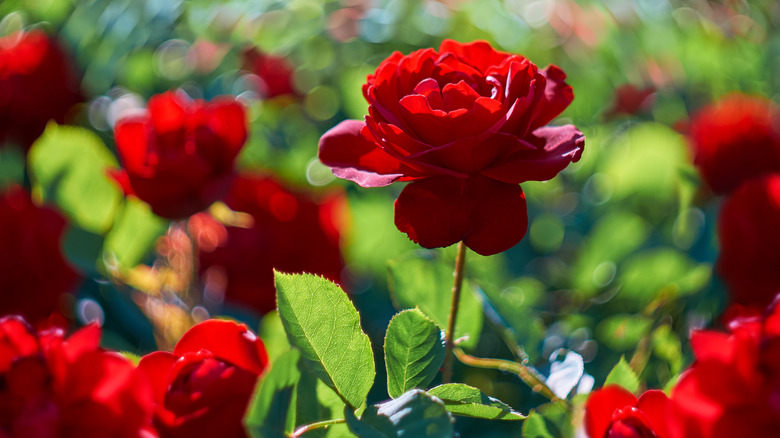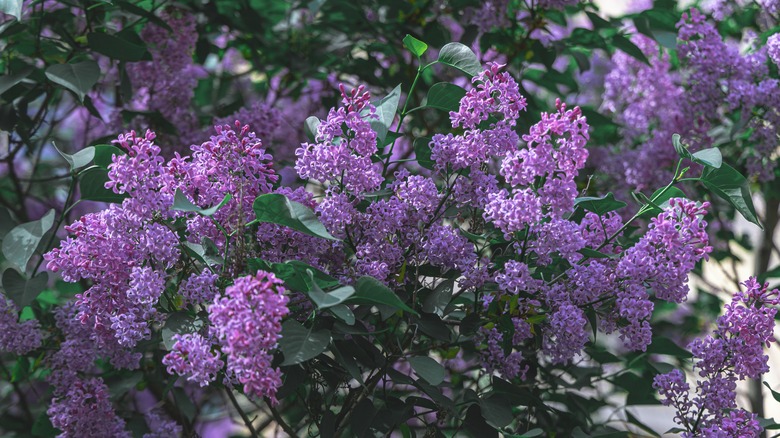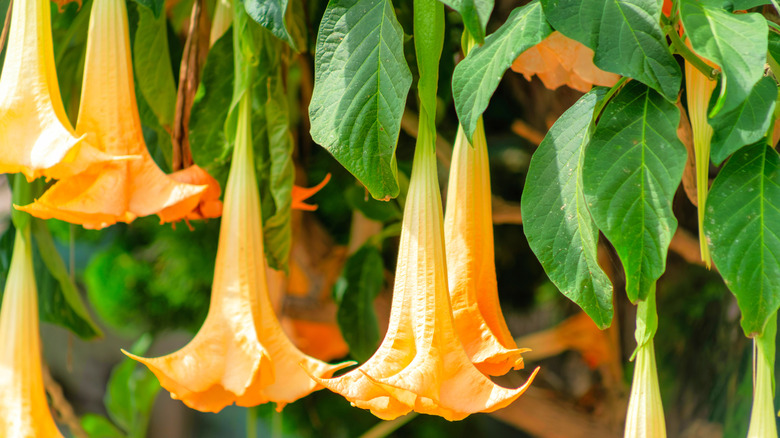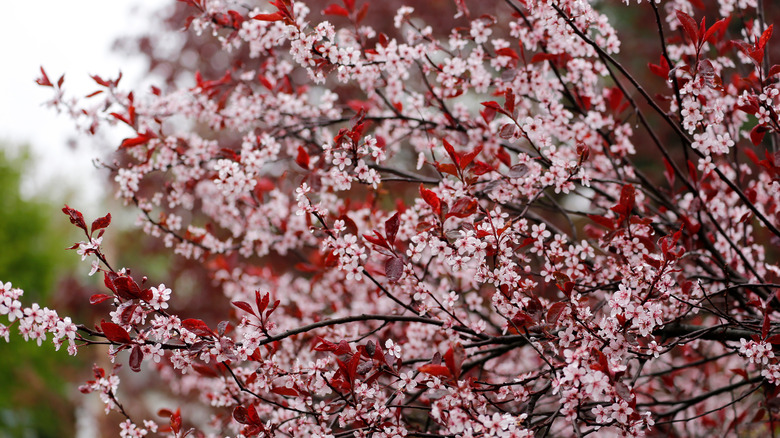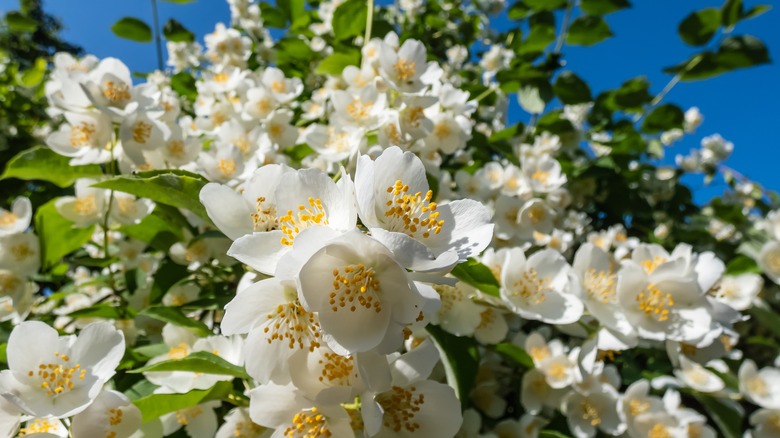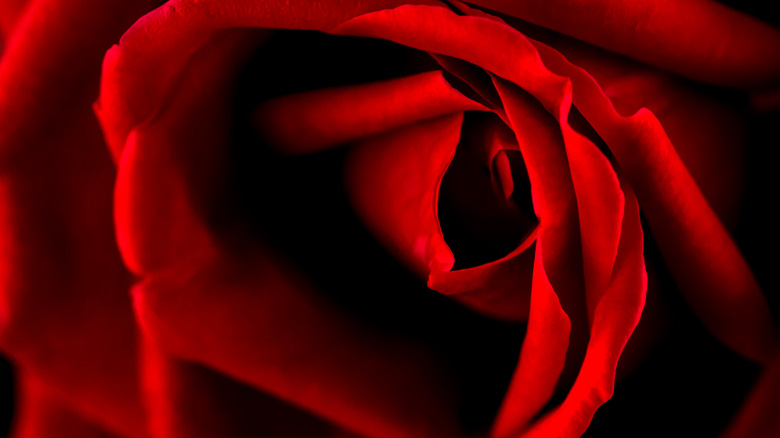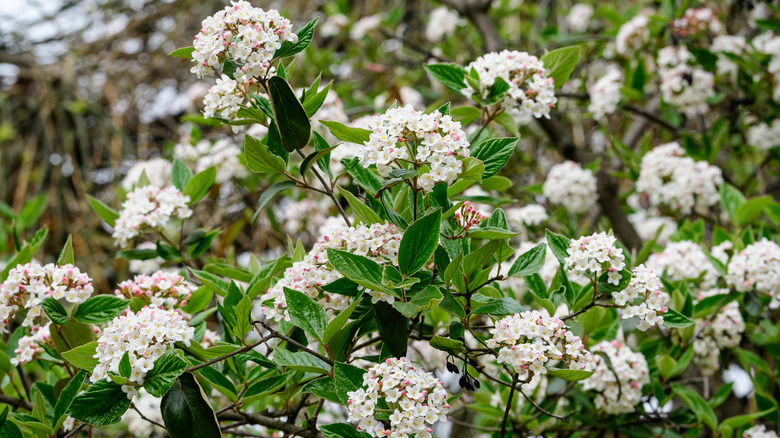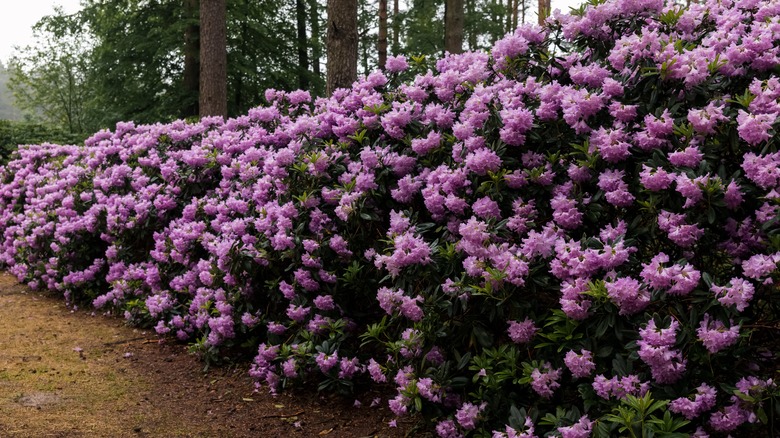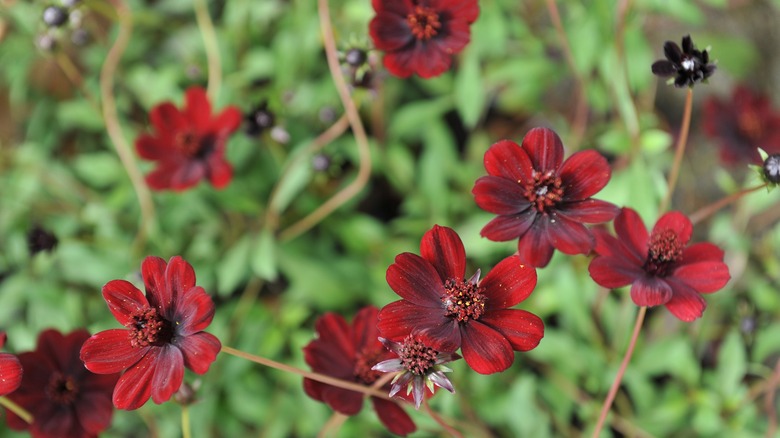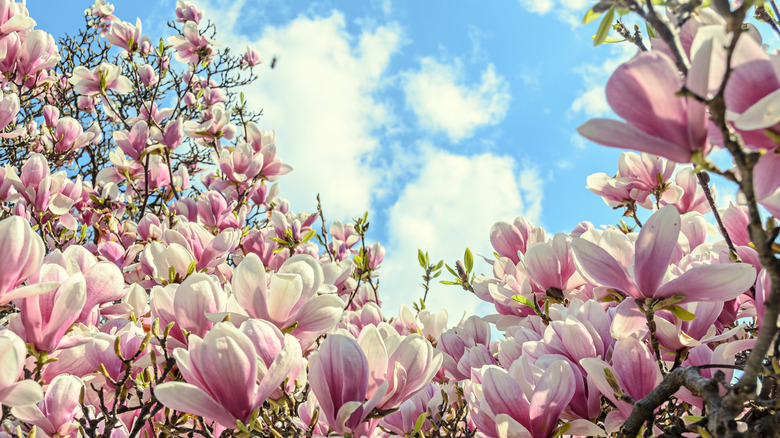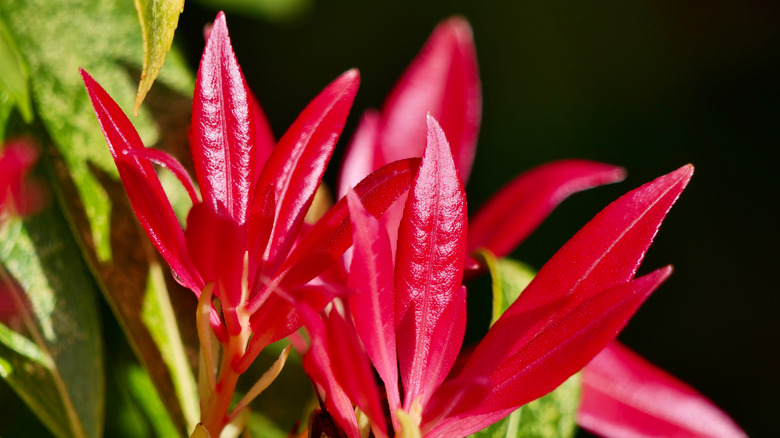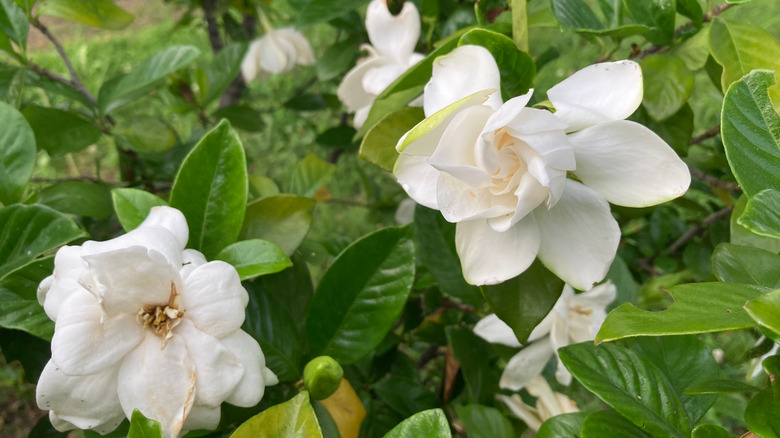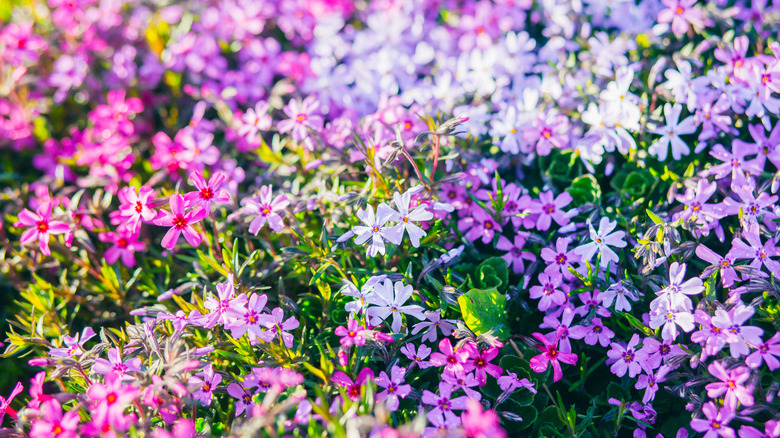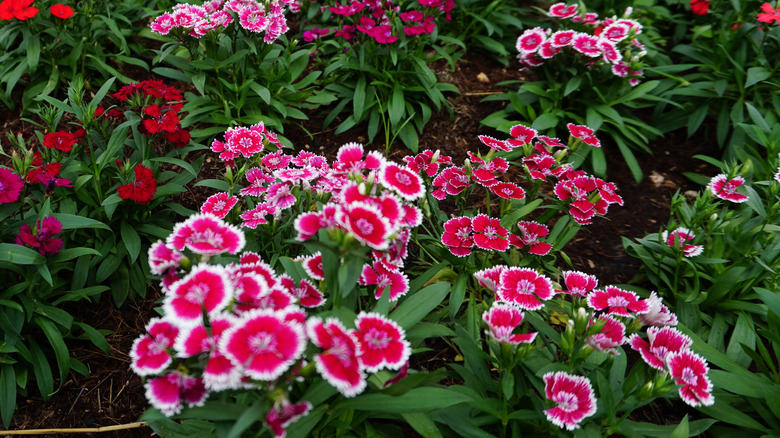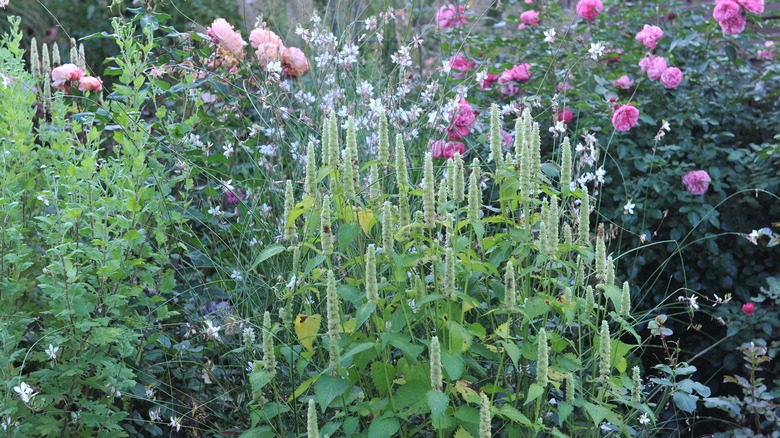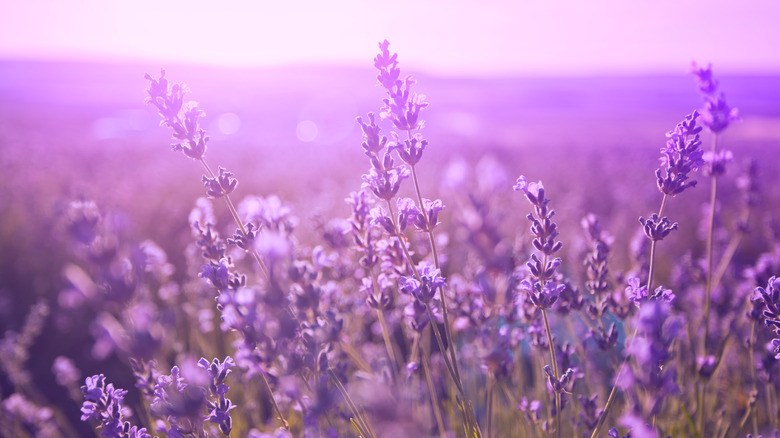15 Bushes With Fragrant Flowers Perfect For Your Yard
Homeowners are always looking for ways to improve curb appeal and elevate their little piece of paradise a notch above the rest. For some, it might be a shady or blossoming tree out front; for others it's a garden or gazebo. While all of these amenities offer undeniable visual charm, they overlook the one sense that will not only take your residence to the next level, but, according to WebMD, can lower stress and fight inflammation: scent.
For as long as man has been cultivating flowers, shrubs, and trees, the fragrance of their blossoms has been a mark of distinction. Bushes bursting with blooms always make an impression, and because the world truly has become a global village filled with botanists who have been perfecting scented plants for hundreds of years, you now have the aromas of the world available at your fingertips.
Here are 15 fragrant flowering bushes that will attract pollinating insects and hummingbirds, as well as impress anyone who enters your delightfully scented air space.
1. Lilacs
Natives of Europe, lilac bushes (Syringa vulgaris), are spring bloomers related to ash trees, privet hedges, and olives. According to Britannica, their blooms are pinkish-white to red, blue, or purple, and they're commercially available in a variety of sizes, so it should be easy to find one that suits your surroundings. You could call their fragrance nature's perfume and get very little argument.
These shrubs can grow up to eight feet tall. They require full sunshine, and they're partial to well-drained loamy soil. They're hardy and easily grown in zones three to seven.
2. Angel's trumpet
With their near-aphrodisiacal fragrance, Angel's trumpet (Brugmansia spp.) flowers are often more welcome than happy hour. With a little TLC, these beautiful fragrance bombs will bedeck themselves in more than 100 bell-shaped blossoms.
A word of caution about these South American natives, says the University of Wisconsin: Brugmansias are poisonous to the touch and should be kept away from pets and kids. Ultimately, their overall size is directly related to how often you prune them. They prefer full sun and grow best in zones nine through 11.
3. Purpleleaf sand cherry
The purpleleaf sand cherry (Prunus × cistena) checks numerous boxes, says the Arbor Day Foundation. First, they blossom in fragrant white to light pink flowers in spring. Second, they keep their reddish-purple foliage throughout the summer and can be used to create hedgerows. Finally, they produce a small crop of dark cherries so sour they must be sweetened to eat, which growers often do.
Left unattended, these shrubs can reach heights of nearly 10 feet with a 7-foot spread. They're best suited to grow in zones two through eight and like well-draining soil and full sun.
4. Mock orange bush
Mock orange bushes (Philadelphus coronarius) are so named for their round, dense, citrus-scented blooms, say the experts at Gardeners Path. Of all the cultivars, one known as 'Buckley's Quill' produces white, deliciously scented double flowers late in spring and into the early part of summer.
These plants are deciduous and grow best in zones three through nine. They like sunshine and will produce the highest number of blooms with full exposure. They can also adapt to partial shade. Without pruning, mock orange bushes can reach heights of eight feet.
5. Roses
Roses share age-old associations with romance and royalty. In fact, two years after the longest-running battle for the English throne finally ended, the country erupted into a civil conflict known as the War of the Roses, per Historic UK.
The scent of the rose is as well-known as its pesky thorns, but when it comes to pungency, not all roses are created equal. Laidback Gardener explains that the 'At Last' variety emits an intensely rosy scent, and 'Lotty's Love' smells like cinnamon. Because they're so diverse, some variety of rose bush will grow throughout zones five to nine.
6. Korean spice viburnum
Korean spice viburnum (Viburnum carlesii) are shrubs that bloom in an assortment of brilliant pink blossoms to produce an aromatic spiciness in springtime, then reward you in autumn with bright red foliage, according to Monrovia. The plant is also deer-resistant, and its robust growth makes for a terrific hedge if you choose to work with them en masse.
This deciduous bush acclimates well to full sunshine or intermittent shade in zones four through eight. It requires well-drained soil and regular watering.
7. Rhododendrons
The name rhododendron (Rhododendron spp.) is attributed to more than 1,000 woody plants in the Ericaceae heath family, which includes azaleas. As the pros at Plant Addicts will remind you, all azaleas are rhododendrons, but not all rhododendrons are azaleas. Many of each variety are fragrant. These shrubs are also often evergreen. They are used ornamentally throughout North America, which is their native habitat.
In particular, rhododendrons produce blooms that are funnel, tubular, or bell-shaped and are hardiest when grown in zones five through eight. Most bush varieties grow to about six feet tall.
8. Chocolate cosmos
Chocolate cosmos plants (Cosmos atrosanguineus) are native to Mexico, and, true to their name, they actually carry the scent of chocolate. Outside of the bushes being cultivated for commercial sale, they've become so hard to find growing naturally that there's speculation they might be extinct in the wild. These shrubs produce flowers of deep burgundy with a rich dark brown center. It's no wonder people say that when they're near them, they smell Tootsie Rolls.
They're heat-seekers, say the growers at Longfield Gardens, best planted in full sunshine in zones seven through ten with regular watering.
9. Magnolias
Magnolias (Magnolia grandiflora) can, of course, be grown as full-sized trees. As such, according to the Lady Bird Johnson Wildflower Center, they can reach 100 feet tall in nature. But many gardeners prefer the shrub-sized varieties, knowing that they'll still get those intoxicatingly sweet blossoms without having to surrender an entire yard to them.
They're early spring bloomers and appear in assorted pastel hues ranging from luminous white to yellow, pink, and purple. Depending on which plants you choose, they'll grow in zones four through nine. Magnolias prefer sunshine and slightly acidic soil that drains well.
10. Andromeda
Japanese andromeda (Pieris japonica), known colloquially as the Lily-of-the-Valley bush, will challenge your olfactory system. If you can believe it, some critics will complain that this plant's spring blooms are actually too sweet. New growth begins with brilliant red shoots, augmented by gossamer white flowers, say the florists at Meadows Farms.
This bush can grow as high as 10 feet tall, so pruning is essential. It prefers partial shade, and grows best in zones five through nine. It's important to note that these plants, while sweet-smelling, are highly poisonous.
11. Cape jasmine
Cape jasmine (Gardenia jasminoides) is another plant that likes it hot, growing best in zones eight to 11. Who can resist the scent of gardenia? Certainly not jazz chanteuse Billie Holiday, who once accidentally burned her hair with a hot comb. Upon the recommendation of a friend, she placed a gardenia over the scorch mark to hide it, thus beginning her lifelong association with the flower, per Vogue Magazine.
Missouri Botanical Garden explains that these bushes grow best in partial shade and acidic soil. They reach between three and six feet tall, and they're toxic to pets and horses.
12. Phlox
Phlox (Phlox paniculata) may be New York natives, but you'll see them stretching down into Dixie as far south as Mississippi, Georgia, and Arkansas. These fragrant florets of whites and pinkish-purples grow in clumps on bushes that rarely surpass four feet tall. Gardening experts at Missouri Botanical Garden say they attract both hummingbirds and butterflies.
These upright perennials are somewhat sturdy but may need staking. They bloom throughout the late summer and favor full sunshine to partial shade. Phlox are best grown in zones four through eight.
13. Dianthus
Dianthus (Dianthus spp.) has been making the world a more aromatic place for centuries. According to Mother Earth Gardener, these clove-scented plants were part of what Victorians called a nosegay arrangement — little boutonnieres and corsages people wore to disguise their body odor before bathing became commonplace.
They're colorful shrubs, too, with blooms of deep pink to dark purple, and they're still a popular addition to certain dishes as a spice. Depending on the variety, they'll grow in zones three through nine. They like full sun or partial shade and generally grow to about three feet tall.
14. Agastache rose mint
Agastache rose mint (Agastache pallidiflora) is a minty-scented herbaceous hyssop that produces hot pink to purple tubular flowers that last from early summer until well into autumn. Bluestone Perennials say there are now more compact varieties, which give planters and homeowners a greater choice about the size that's best-suited to their landscaping needs.
These plants attract hummingbirds and insect pollinators, as well as butterflies. They love sunshine, and work well in dry weather. They are hardy in zones five through ten.
15. Lavender
Lavender (Lavandula spp.) refers to more than two dozen shrubs with a long and multipurpose history, including uses as a disinfectant, a bacteria killer, a tranquilizer, and a headache reliever. It's also quite beautiful and smells like... well, you know, lavender.
As New World Encyclopedia explains, lavender flowers are typically purple, but may also appear in white or pink. Most will do well in zones five through nine. They like to be planted in alkaline soil with full sunshine, and grow to between two and three feet tall.
